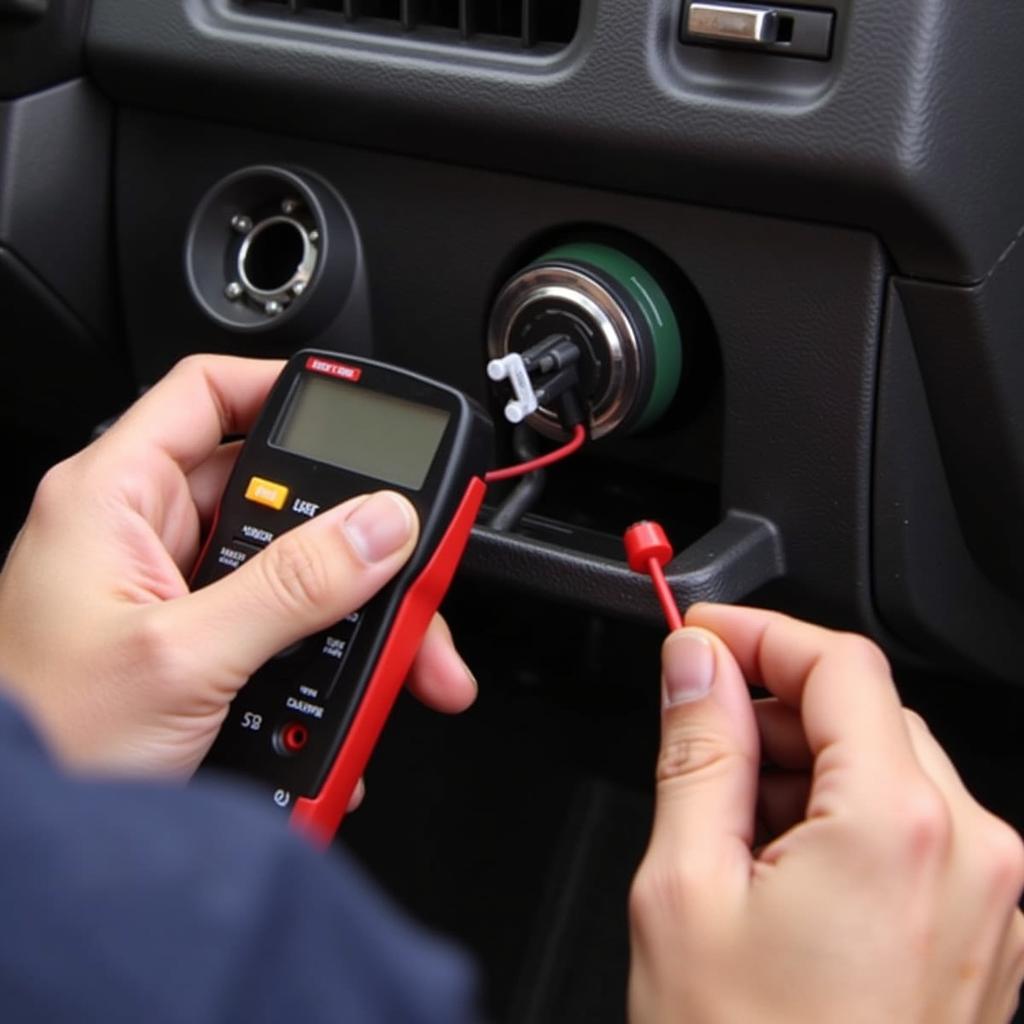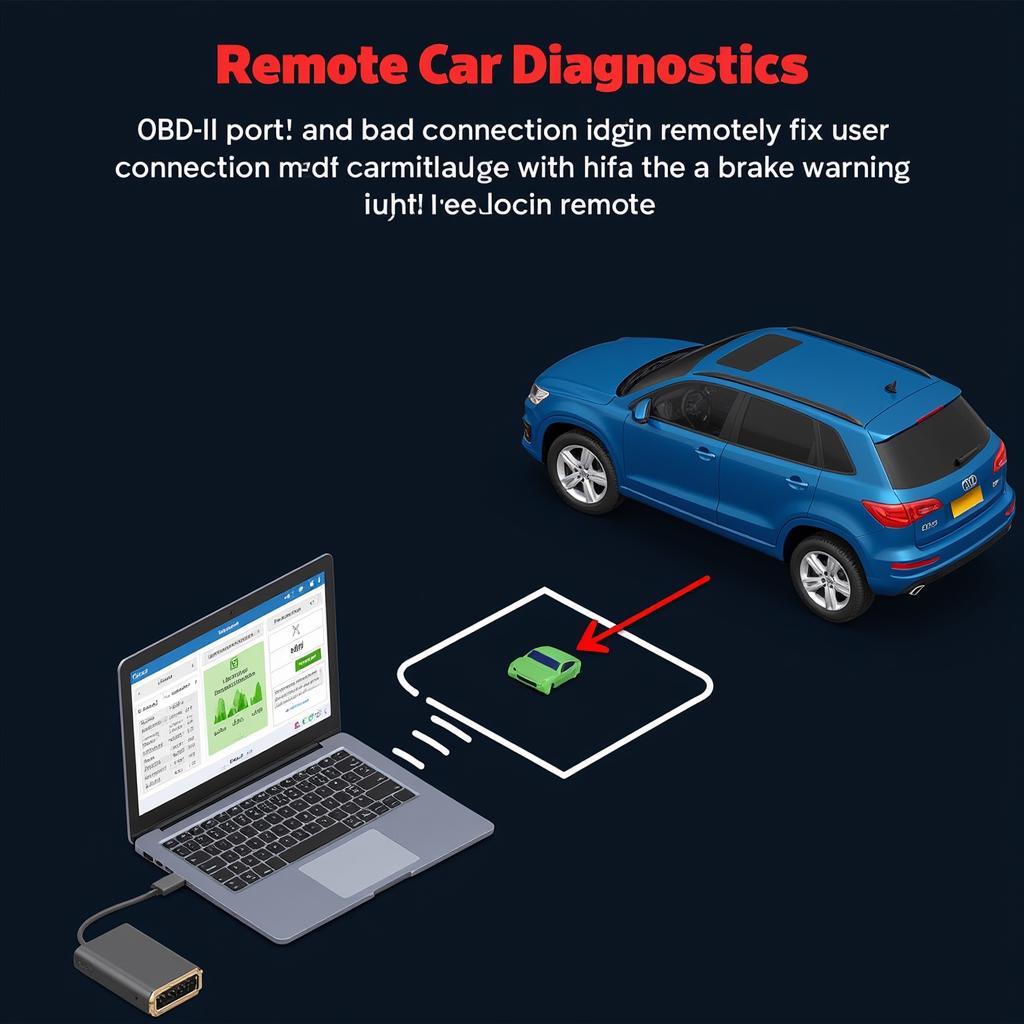Understanding why your brake warning light is on is crucial for safe driving. While a variety of factors can trigger this light, a bad connection can often be the culprit. This issue can range from a loose wire to corrosion on the terminals, leading to intermittent or persistent brake light malfunctions.
Common Causes of a Bad Connection Brake Warning Light
A bad connection impacting your brake warning light can stem from several sources:
- Loose or corroded battery terminals: The battery is the heart of your car’s electrical system, and a poor connection here can disrupt signals, including those to your brake light.
- Faulty brake light switch: This switch, often located above the brake pedal, signals the brake lights to activate when you press the pedal. A bad connection here can disrupt this signal.
- Damaged wiring harness: The wiring harness bundles the electrical wires in your car. Damage from wear and tear, rodents, or accidents can expose or break wires, leading to bad connections.
- Wworn-out brake light bulbs: While a blown bulb itself doesn’t signal a bad connection, a corroded or loose socket can prevent a new bulb from working correctly, triggering the warning light.
 Corroded Car Battery Terminals
Corroded Car Battery Terminals
Diagnosing the Problem
Identifying the root of the bad connection requires a systematic approach. Here’s a step-by-step guide:
- Check the battery: Begin by inspecting your battery terminals for corrosion. A white, powdery substance indicates corrosion.
- Inspect the brake light switch: Locate the switch above the brake pedal and examine it for any visible damage or loose connections.
- Examine the wiring: Carefully trace the brake light wiring harness for any signs of damage, fraying, or exposed wires.
- Inspect the brake light bulb sockets: Check the bulb sockets for corrosion, dirt, or debris that could be hindering a proper connection.
 Mechanic Inspecting Brake Light Switch
Mechanic Inspecting Brake Light Switch
Remote Solutions for Brake Warning Light Issues
In some instances, remote diagnostics and software solutions can address brake warning light issues stemming from faulty sensors or miscommunication within the car’s computer system. Here’s how it works:
- Vehicle Communication: A remote technician connects to your vehicle’s onboard diagnostic system (OBD-II) via a specialized device.
- Data Analysis: The technician analyzes the vehicle’s data, pinpointing the source of the problem.
- Software Update/Reprogramming: If the issue lies in the software, the technician can remotely install updates or reprogram certain modules to rectify the problem.
 Remote Car Diagnostics Using Laptop
Remote Car Diagnostics Using Laptop
When to Seek Professional Help
While some bad connection issues can be resolved with basic troubleshooting, certain situations warrant professional assistance. This includes:
- Inability to pinpoint the problem: If you’re unable to identify the source of the bad connection, a qualified mechanic can provide expert diagnosis.
- Complex electrical issues: Dealing with complex electrical systems requires specialized knowledge and tools best handled by professionals.
- Lack of comfort: If you’re not comfortable working with electrical components, it’s always safer to seek professional help.
Expert Insight
“Ignoring a brake warning light, even if it’s intermittent, can be dangerous,” says automotive electrician John Miller. “A bad connection can lead to complete brake light failure, increasing the risk of accidents. Addressing the issue promptly ensures your safety and that of others on the road.”
Conclusion
A bad connection triggering your brake warning light shouldn’t be ignored. By understanding the potential causes and following a systematic approach to diagnosis, you can address the issue effectively. Remember, when in doubt, seeking help from a qualified mechanic is always the safest course of action.
FAQs
Q: Can a bad ground cause the brake warning light to come on?
Yes, a bad ground can disrupt the electrical circuit, potentially causing the brake warning light to illuminate.
Q: Can I drive my car with the brake warning light on?
It’s not advisable to drive with the brake warning light on as it indicates a potential issue with your braking system.
Q: How often should I check my car battery for corrosion?
It’s good practice to inspect your car battery for corrosion at least every three months.
Q: Is it expensive to fix a brake light switch?
The cost to replace a brake light switch can vary, but it’s generally an affordable repair.
Q: Can a bad brake light bulb cause other electrical problems?
While uncommon, a malfunctioning brake light bulb can potentially affect other electrical components in some cases.
Remember, maintaining your car’s electrical system, including addressing bad connections promptly, is crucial for safe and reliable driving.
